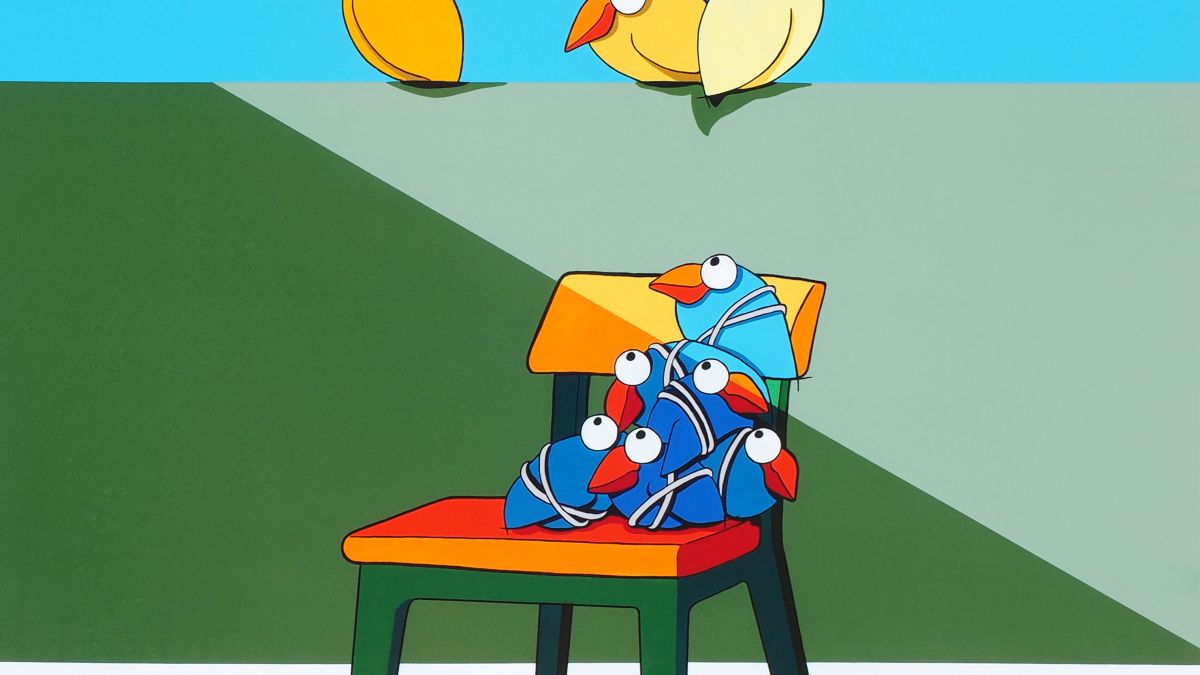MAX BI. Urban animals

MAX BI. URBAN ANIMALS
Thursday, May 7 we will open a new space, after those of Brescia and Iseo, a new gallery, this time virtual, which will open to visitors with a wide selection of new works by the artist Max Bi. Works from the cycle "Urban animals" of generous size, colorful and joyful, to reject the negativity of this period and to remind us that the earth, the cities, can survive us, while the animals instead find it spontaneous to live even in our absence. The exhibition will be visible in a large and innovative space specially prepared that you can visit 360 ° for as long as you want, with the ability to dwell on individual works, enlarging every detail or appreciate them on the walls as in a real gallery. Max Bi's works in the exhibition are characterized by a unitary language and depict imaginary urban landscapes inhabited exclusively by animal figures. On the various canvases are represented deserted cities, where the human presence has left free space to animal action: sharks, wolves, parrots, giraffes and many others are the only protagonists of this narrative in images, and stand in the foreground on backgrounds created by superimposing irregularly brightly colored elements. They are actually animals with anthropomorphic traits: to their snouts, in fact, the artist wanted to entrust looks and anthropic expressions taken from his daily life, stopping the expressions caught on the faces of his bartender, the newsagent, a relative "because each of us has expressions that recall who an ant, who a giraffe, who an elephant," as he says.
In these works animals and men exchange roles, and the former are found to inhabit the places of the latter, giving life to scenes that recall images experienced in this precise historical moment, in which nature regains space at the expense of a hidden human presence. These works can only make us reflect on a near reality, in which the artist leaves it up to the viewer to decide whether these cities represent freedom or a cage. The artistic language of Max Bi is the result of a figurative research long twenty years, in which the artist has experimented with a mixture of languages and various expressive techniques. The result of this continuous search for novelty and change leads him to a rendering that draws clear inspiration from the iconographic panorama of Italian Pop Art, such as Paladino's tribal masks or Basquiat's graffiti. The animals of Max Bi, in fact, are defined in a cartoonish way by bright and acid colors, recalling the language of cartoons, and are rendered through fringed and nervous graphic strokes, in which the color explodes while maintaining an overall chromatic harmony.
Max Bi, born in Brescia in 1973, began experimenting with various artistic techniques at a very young age, between the late '90s and early 2000s, moving from painting to performance, from sculpture to installations and photography. Animated by a "citationist nomadism" inherited from the knowledge of one of the masters of the Transavanguardia, Sandro Chia, he is inspired by the most disparate artistic currents that have crossed the art of the second half of the twentieth century, to reach the creation of his own personal stylistic code. His artistic language, therefore, is the result of a long research, which remains unexhausted, and which has led him to engage with ease in the techniques of projection of the image on emulsified canvas, as in the tribal graffiti composed with thickening of sand, quartzite and aluminum powder, in the calligraphic graphics of the writers reproduced with the stencil and the spray can and in collage, until reaching characteristic solutions. The artist has exhibited, on the occasion of important personal and collective exhibitions, in Paris, New York and, in Italy, at Villa Ponti in Arona (No), at Palazzo Medici Ricciardi in Florence, at the Torre Civica in Solferino (Mn), as well as in Crema, Milan and Brescia. He was also the 2006 winner of the Homo Urbanus Award, organized by the Faculty of Architecture of Palermo and a finalist in the Celeste Award in San Gimignano (Si).


